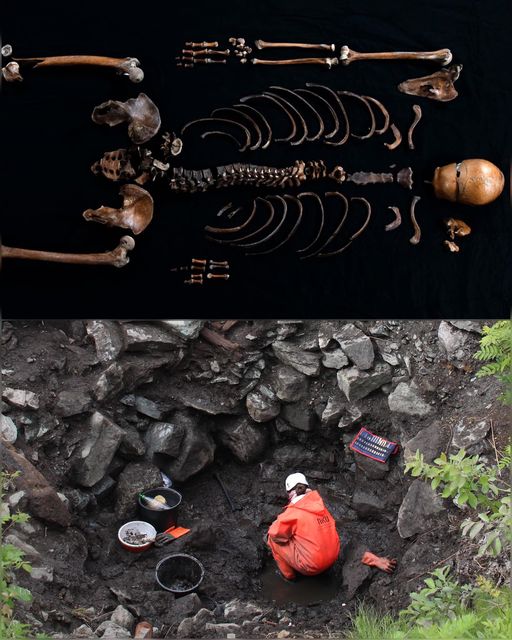In 1197, the formidable Sverresborg Castle, located near present-day Trondheim in central Norway, became the backdrop for a harrowing conflict that has echoed throughout history. This key episode unfolded during Norway’s civil war period—a time when rival factions clashed over claims to the throne. The conflict intensified when the Baglers, ardent supporters of the archbishop and bitter adversaries of King Sverre Sigurdsson, launched a surprise attack while the king was absent. The attackers pillaged the castle, razed structures by fire, and carried out a particularly grim act by hurling a corpse into the castle well, poisoning the water supply. This chilling maneuver was a calculated attempt to demoralize the castle’s defenders and ensure their psychological and physical defeat.
This gruesome incident was recorded in the Sverris Saga, a significant 182-verse narrative composed by one of King Sverre’s confidants. The saga provides far more than a chronicle of a violent event; it is a treasure trove of insights into early Norwegian society, the dynamics of medieval power struggles, and the harsh realities of life in the Middle Ages. For historians and archaeologists alike, the saga remains a cornerstone in understanding Norway’s turbulent past.

Interest in the story of Sverresborg’s infamous “well man” resurfaced in 1939 when archaeologists conducted a partial excavation of the well shaft. Seven meters below the surface, they unearthed a human skeleton. However, the discovery garnered little attention, and the mystery of the skeletal remains was left unresolved for decades. It wasn’t until the efforts of archaeologist Anna Petersén and her team in 2014 and 2016 that the investigation was reignited. Driven by a mission to connect historical texts with physical evidence, Petersén’s team resumed the excavation, employing modern methods to extract long-buried clues.
The findings from the renewed excavations were remarkable. Key remains, including the skull, left hand, and other bones, were recovered and analyzed. The skeleton belonged to a man estimated to be between 30 and 40 years old, standing approximately 1.75 meters tall (about 5 feet 9 inches). The bones offered a rare glimpse into the health and physical characteristics of medieval Norwegians. Scientists carefully extracted a DNA sample from one of the man’s teeth, leading to groundbreaking insights. Genetic analysis revealed that the man likely had light-colored hair, blue eyes, and a medium skin tone—features that challenge previous assumptions about the appearance of medieval Norwegians and enrich our understanding of their genetic diversity.
The findings sparked significant discussion within the academic community. Professor Michael D. Martin from the Norwegian University of Science and Technology’s University Museum in Trondheim emphasized the importance of these discoveries. “This is the first time that a figure described in a medieval saga has been found through archaeological evidence,” he stated. “While we can’t be absolutely certain that these remains belong to the man referenced in the Sverris Saga, the combination of scientific and historical evidence is compelling.” He added, “If this were presented in a hypothetical court trial, a jury would undoubtedly be convinced that we’ve identified the victim described in the saga.”
The broader implications of the discovery extend far beyond the identification of the “well man.” This event offers a window into the brutal tactics employed during Norway’s civil wars—an era marked by fierce rivalries, shifting allegiances, and violent power struggles. The Baglers’ act of contaminating the castle’s water supply reflects the strategic and psychological nature of medieval warfare. Such tactics were not merely acts of destruction; they were designed to break the enemy’s spirit and cripple their ability to resist.
To contextualize this period, Norway in the late 12th century was a fractured nation embroiled in civil war. Competing factions, including the Baglers and the Birkebeiner loyal to King Sverre, vied for control of the throne. These conflicts were fueled by political, religious, and regional divisions, often leading to devastating consequences for both combatants and civilians. The attack on Sverresborg Castle was emblematic of the brutality of the era and the lengths to which factions would go to secure victory.
The discoveries at Sverresborg Castle have also underscored the value of interdisciplinary research in modern archaeology. By combining genetics, historical texts, and advanced excavation techniques, researchers are able to reconstruct the lives of individuals who lived and died over 800 years ago. The story of the “well man” is a poignant reminder that behind the grand narratives of history lie the human experiences of individuals caught in the crossfire of political upheaval. These discoveries give voice to those who might otherwise remain anonymous in the pages of history.
Moreover, the findings highlight the importance of revisiting historical sites with fresh perspectives and new technologies. The well at Sverresborg Castle, once seen merely as a footnote in history, has become a key to unlocking a deeper understanding of medieval Norway. Each artifact, bone fragment, or strand of DNA serves as a puzzle piece, bringing us closer to a more complete picture of the past.
In conclusion, the excavations at Sverresborg Castle have not only provided answers to an 800-year-old mystery but have also illuminated the broader historical and social context of medieval Norway. The discovery of the “well man” connects the legendary accounts of the Sverris Saga to physical reality, bridging the gap between narrative history and scientific evidence. As archaeologists continue their work, the site stands as a testament to the resilience of human stories and the enduring quest to uncover the truth about our past. These findings remind us that history is not just a collection of events but a tapestry of human lives, struggles, and triumphs that continue to shape our understanding of the world.





